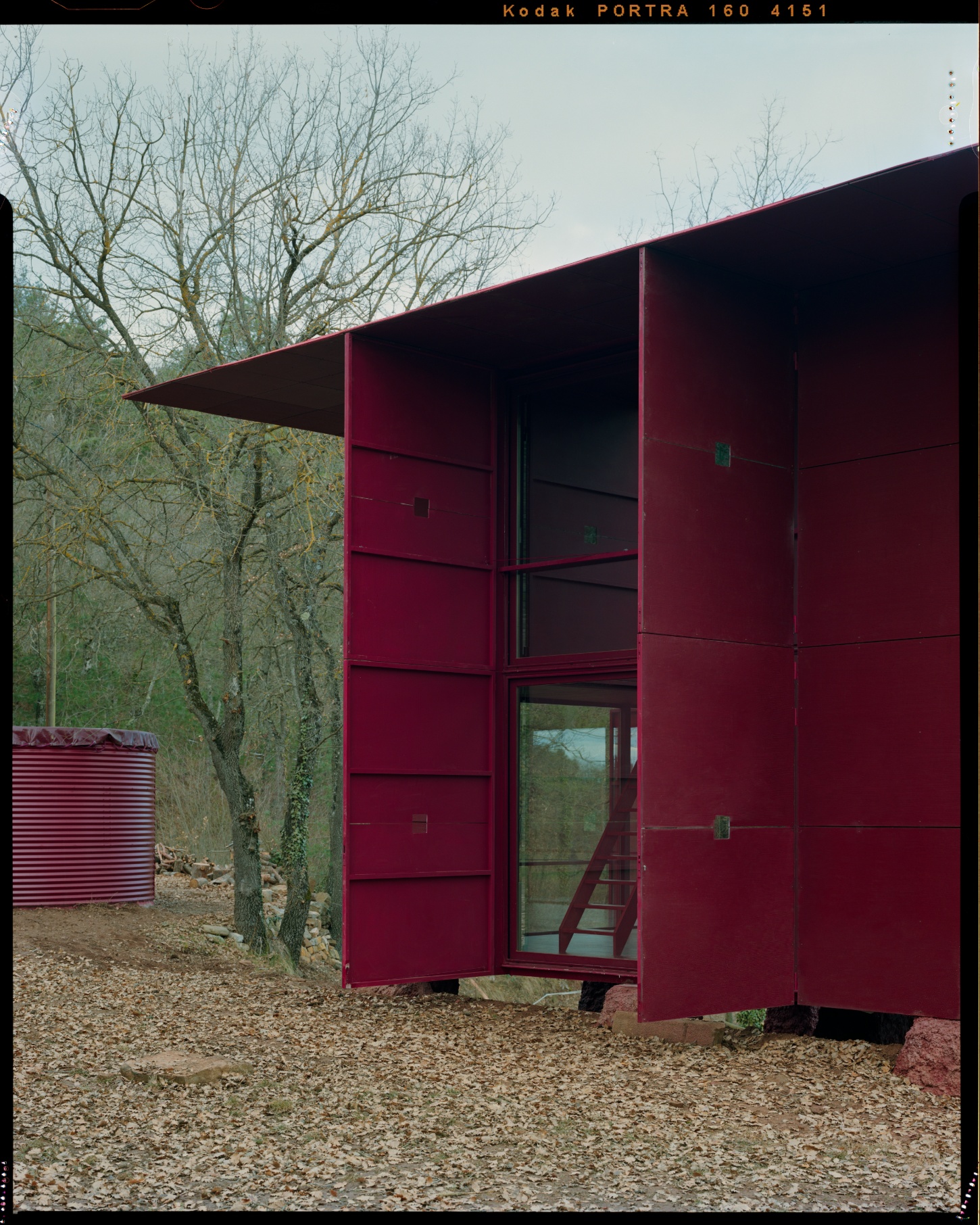In the woodlands outside Barcelona, a red dwelling perches lightly atop robust shotcrete pillars, its bold presence contrasting with the forest’s muted tones, embodying TEST studio’s vision of modularity and sustainability in a home that redefines permanence within nature.
The project’s origins lie in the remnants of a deteriorating wooden house, once nestled on a nine-pillar foundation, now left to decay in the mountains. Where others might have seen a lost cause, TEST saw an opportunity: rather than razing the structure and starting anew, they proposed a radical yet sensitive approach—revitalization through modularity.
The Prefab House Changeover is a testament to the notion that architecture can be both bold and considerate. The newly constructed home consists of eight 3x3x3-meter modules, balloon-framed for efficiency and perched atop reinforced concrete pillars. This system, secured with mechanical fasteners, allows for easy assembly and future modifications—an essential feature in an era where adaptability is key.
The choice of materials is equally deliberate. The structure’s bold red facade is softened by textured wood cladding, a nod to its natural surroundings. The contrast between industrial precision and organic warmth is intentional, striking a balance between human intervention and environmental harmony.
Stepping inside, the house resists prescriptive living. The interior shuns rigid programming, favoring fluidity over fixed spatial constraints. Movable partitions, minimal built-ins, and expansive glazing create a space that evolves with its inhabitants. The design fosters a dialogue between interior and exterior, with large openings that invite the forest in, dissolving the boundary between shelter and landscape. At once intimate and expansive, it is a home that breathes.
This approach to design raises compelling questions about the way we build and inhabit spaces. In a world grappling with environmental fragility, should architecture be static, or should it, like nature itself, embrace change? TEST’s intervention suggests a compelling answer: that perhaps the most sustainable buildings are those that remain in conversation with their surroundings, their inhabitants, and the future.
The Prefab House Changeover is more than an architectural feat; it is a philosophy materialized. By prioritizing modularity, flexibility, and integration, it challenges traditional notions of permanence in home design. In doing so, it not only revives a forgotten structure but also invites a broader discourse on the evolving nature of domesticity.












